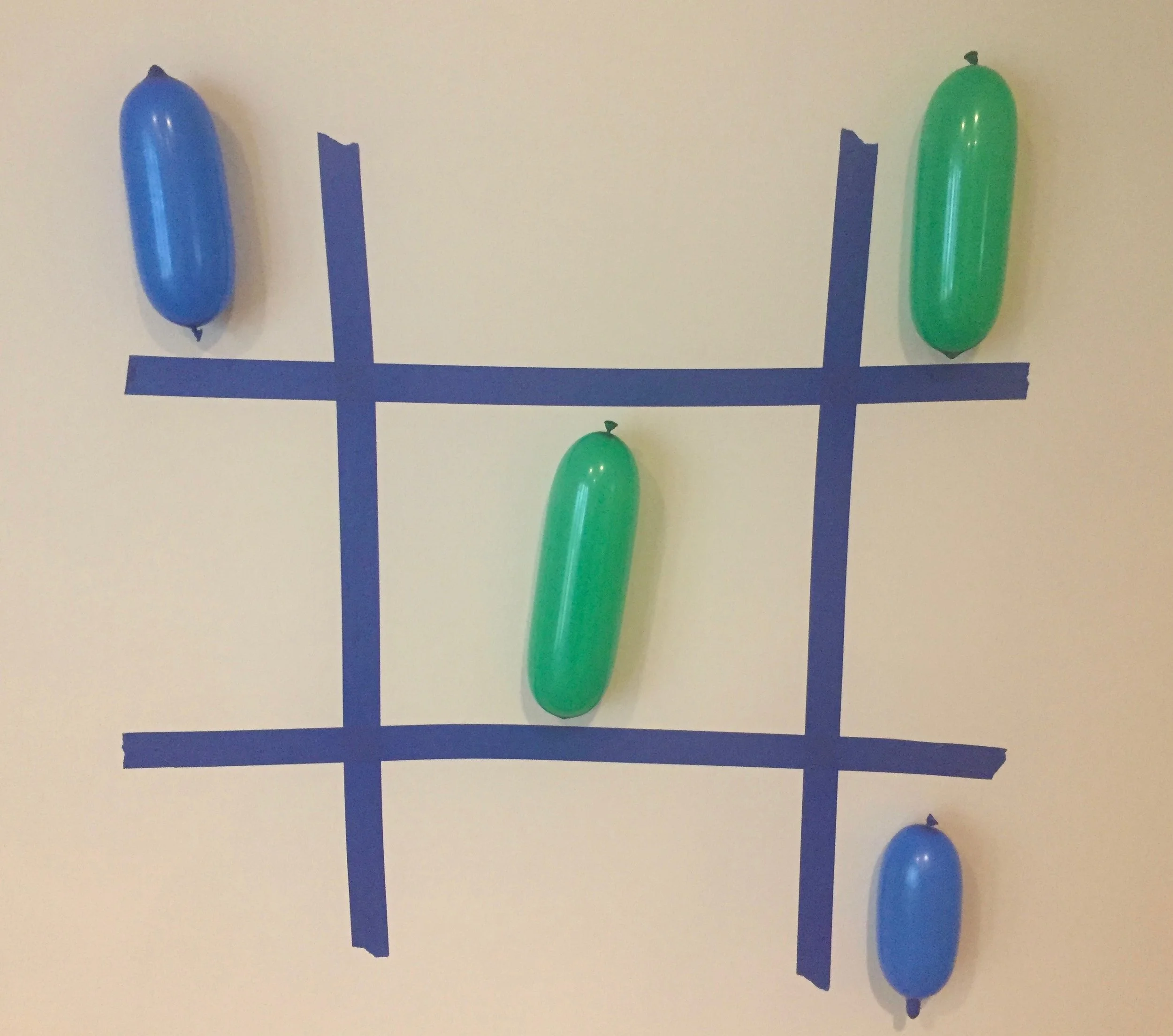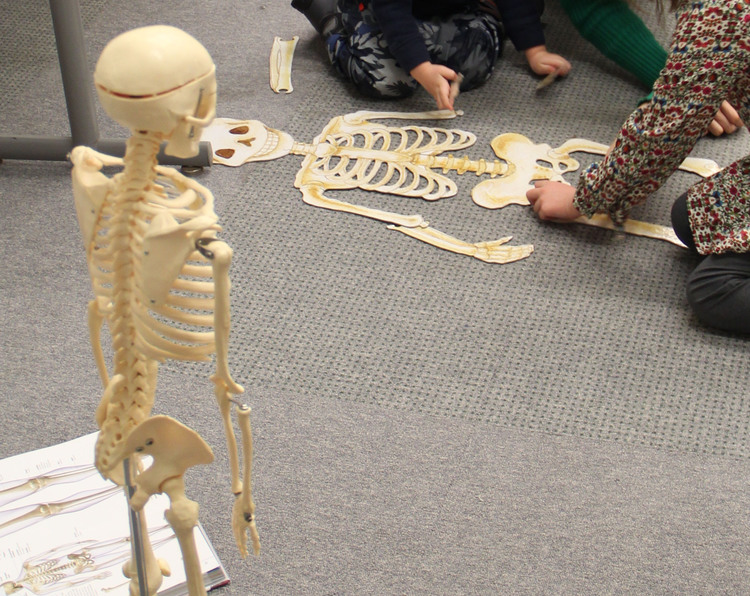While researching chromosome activities, I found this gummy worm Human Chromosome Art Work and decided to create an activity inspired by it.
I cut gummy worms into 22 sets of matching sizes and colors. For the 23rd set of chromosomes, I cut two different sized and colored chromosomes to be the X and Y chromosomes (I have no idea if it would have been more accurate to make the colors similar for the X and Y). I also cut bits out of the edges to represent the centromere locations.
I showed the kids this image of organized chromosomes called a karyotype. We discussed how many set of chromosomes they saw. I asked why there are sets. Their first guess was that the cells were undergoing mitosis, which is a reasonable guess, but incorrect. They eventually worked out that one of each chromosome pair came from the father and one from the mother.
I told the kids that we needed to match and organize some chromosomes so we could study them more carefully. (I also told them playfully that they were banded so colorfully so they could be easier to see.) I gave them a bowl of “chromosomes” and plates to work on. They organized them into pairs and ordered them by length (which they noticed is how our karyotype example looks to be organized). At the end, they noticed the two pieces without matches, and determined they were representative of the XY chromosomes of a male.
Afterward, we took a look at this Genome Poster to see all the genes identified on each chromosome.
I found the gummy worms to be useful models for a few reasons besides being tasty. I like the way gummy worms have banding which somewhat reminds me of the light and dark regions on chromosomes (from the staining of chromosomes to see them more easily). I like how gummy worms are colorful, making them easy to match, and how they’re easy to cut to different lengths. I also cut indents where the centomers are located. All the cutting was a bit of work. If you were doing it with a whole class, each group could cut a set of gummy worms and trade with another group to organize.
Here are other chromosome resources I used for my research, inspiration, or want to keep for future use.
Diagrams from here and here show how DNA is wrapped, coiled, and condensed in chromosomes
How Do Scientists Read Chromosomes tells more about centomers
Cut and Paste Karyotyping lets kids cut out one set of the chromosomes and glue it next to its match
Karyotyping Coloring Pages includes XX, XY, XX Down Syndrome, and XY Down Syndrome karyotypes. These are blank chromosomes that kids can color or band themselves. They’re probably more useful for an elementary introduction to karyotypes or Down Syndrome.









































